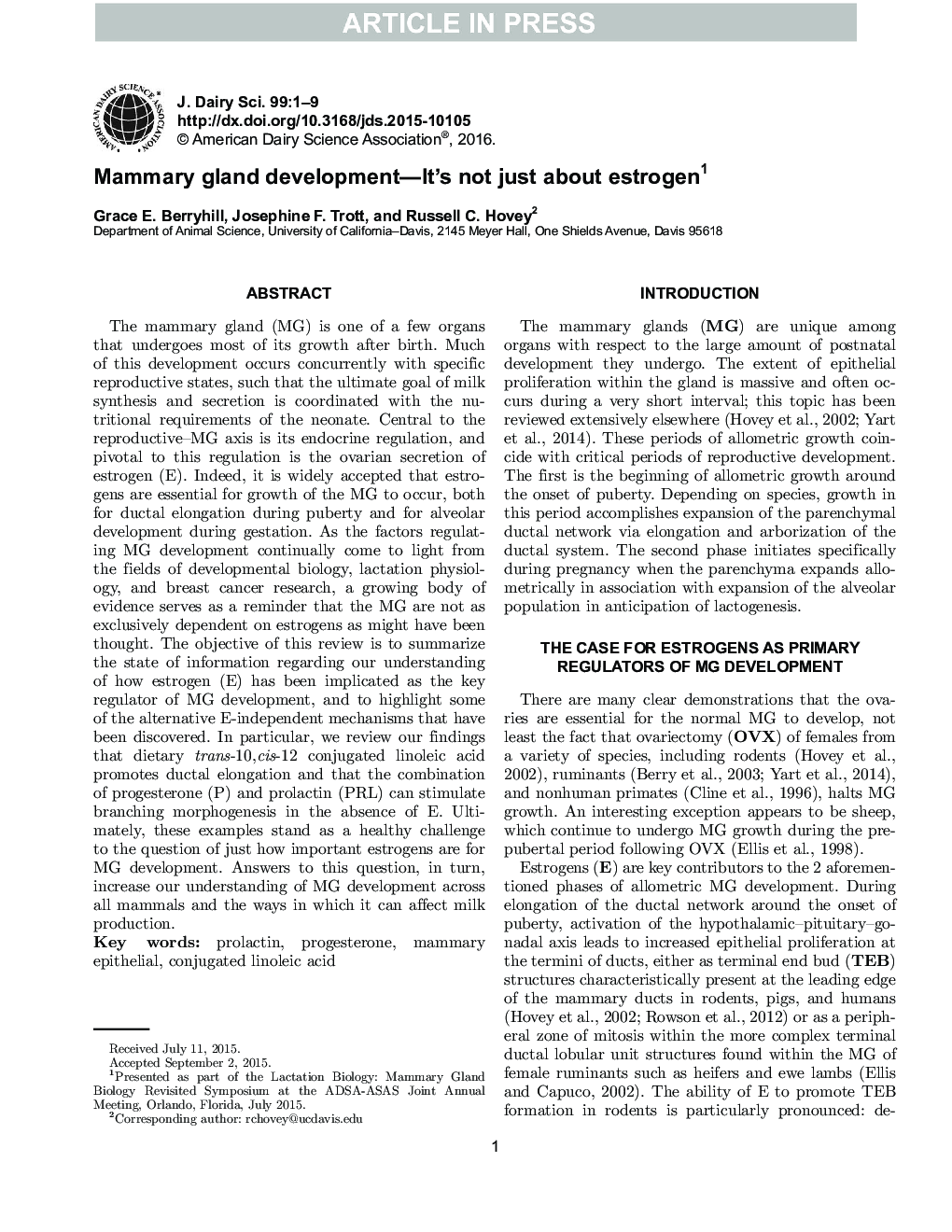| Article ID | Journal | Published Year | Pages | File Type |
|---|---|---|---|---|
| 5789575 | Journal of Dairy Science | 2016 | 9 Pages |
Abstract
The mammary gland (MG) is one of a few organs that undergoes most of its growth after birth. Much of this development occurs concurrently with specific reproductive states, such that the ultimate goal of milk synthesis and secretion is coordinated with the nutritional requirements of the neonate. Central to the reproductive-MG axis is its endocrine regulation, and pivotal to this regulation is the ovarian secretion of estrogen (E). Indeed, it is widely accepted that estrogens are essential for growth of the MG to occur, both for ductal elongation during puberty and for alveolar development during gestation. As the factors regulating MG development continually come to light from the fields of developmental biology, lactation physiology, and breast cancer research, a growing body of evidence serves as a reminder that the MG are not as exclusively dependent on estrogens as might have been thought. The objective of this review is to summarize the state of information regarding our understanding of how estrogen (E) has been implicated as the key regulator of MG development, and to highlight some of the alternative E-independent mechanisms that have been discovered. In particular, we review our findings that dietary trans-10,cis-12 conjugated linoleic acid promotes ductal elongation and that the combination of progesterone (P) and prolactin (PRL) can stimulate branching morphogenesis in the absence of E. Ultimately, these examples stand as a healthy challenge to the question of just how important estrogens are for MG development. Answers to this question, in turn, increase our understanding of MG development across all mammals and the ways in which it can affect milk production.
Related Topics
Life Sciences
Agricultural and Biological Sciences
Animal Science and Zoology
Authors
Grace E. Berryhill, Josephine F. Trott, Russell C. Hovey,
